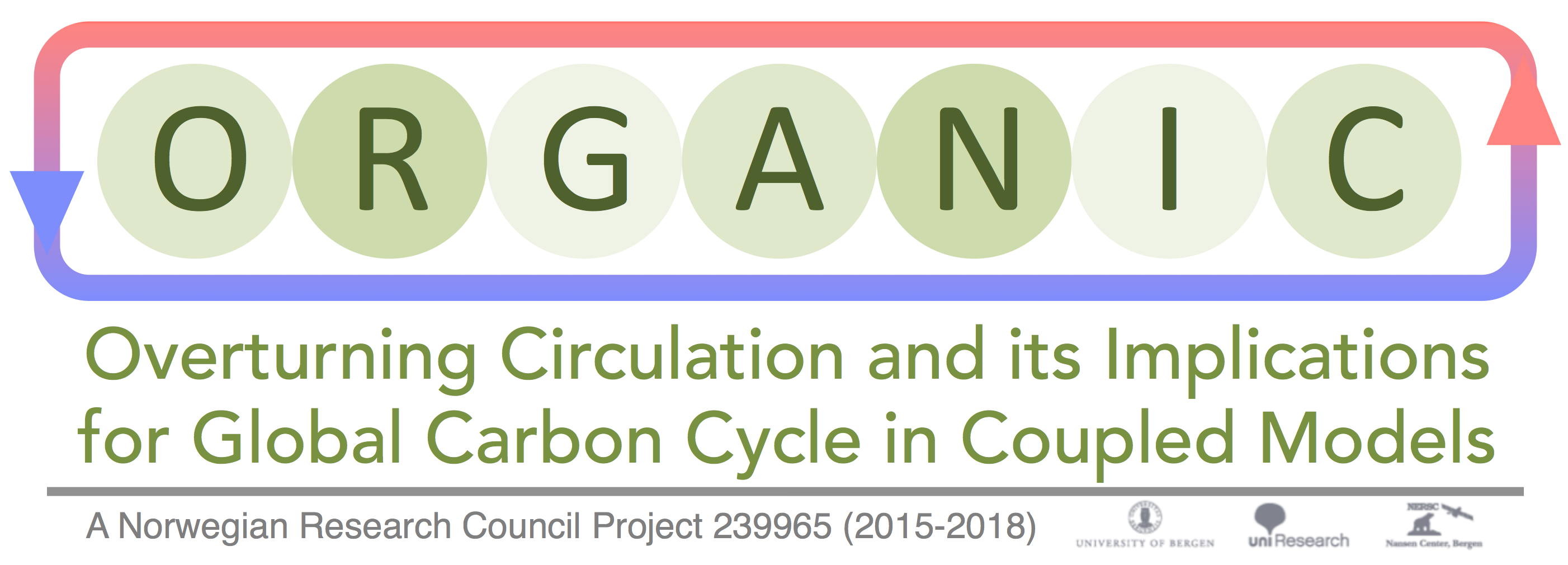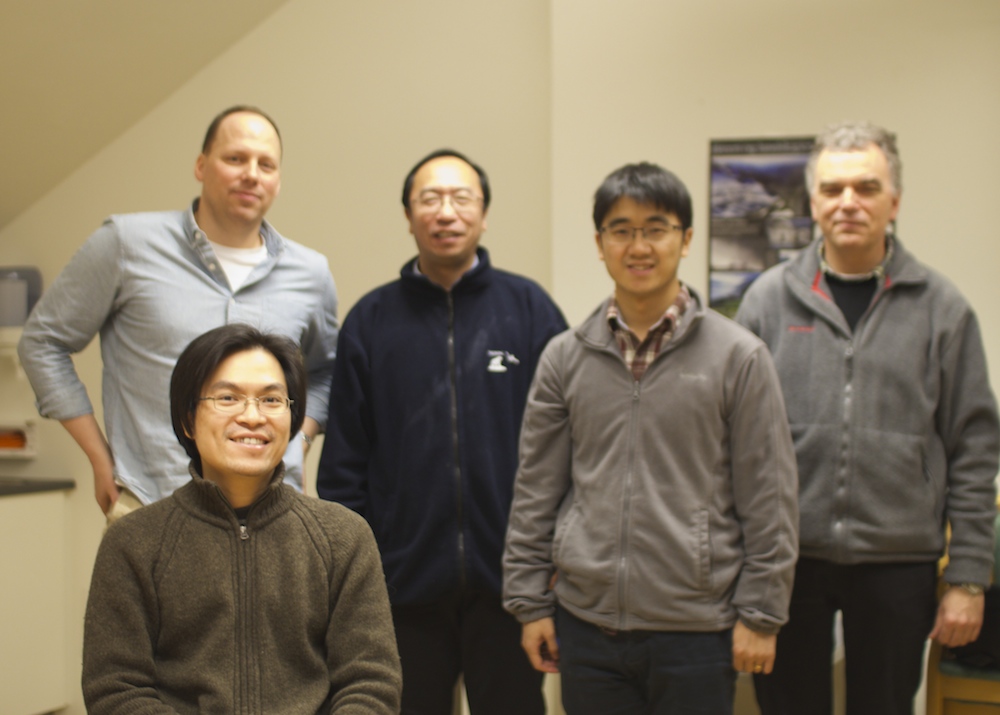Project page - Organic
Organic
Overturning circulation and its implications for global carbon cycle in coupled models (ORGANIC)


The Team - at Kick off January 2015

The ORGANIC project will enhance our knowledge in climate variability simulatedby the NorESM model and identify uncertainty that comes with its future projections. The focus is to elucidate the linkage between large scale overturning circulation with the biogeochemical cycling in the ocean.
This link is necessary since hydrography tracers such as temperature andsalinity do not give us a comprehensive overview on the overturning circulation.
On the other hand, biogeochemical tracers such as nutrient and CFCs are closely tied to the ocean circulation and can be used as indicators for patterns and ventilation rates of the ocean.
Due to the non linear interactions between climate and ocean carbon cycle, it is vital for an Earth system model to accurately simulate the relevant former and latter processes individually as well as interactively in order for it to produce a sound future climate projections.
The outcome of ORGANIC will be of highly relevant for both global and regional climate studies, particularly in regions where the ocean ventilation will be perturbed by anthropogenic forcing.
The work is divided in three work packages:
WP1: Sensitivity of thermohaline circulation patterns and rates
WP2: Equilibrium states of ocean biogeochemistry
WP3: Marine sediment dynamics
The proposed interdisciplinary work will involve scientists from natural, mathematical and computational scientists. The study utilizes the nationally developed Norwegian Earth system model and observational sets from contemporary and paleo periods.
The methods that will be developed throughout the project, the Matrix Free Newton Krylov, will provide novel and efficient approach to increase our understanding in the sophisticated interactions between the physical and biogeochemical processes in the climate system.
